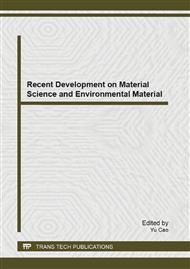p.177
p.181
p.191
p.196
p.201
p.205
p.210
p.213
p.218
Porosity Formation after the Irradiation Termination of Laser
Abstract:
Porosity is formed because of the keyhole collapse. The porosity formation is associated with the melt pool dynamics, the keyhole collapse and solidification processes. The objective of the paper is t to investigate porosity formation mechanisms and fluid flow in the melt pool using the volume of fluid method. The results indicate that the formation of porosity in continuous wave keyhole mode laser welding is associated to keyhole collapse, backfilling of liquid metal close the gas exit of the laser welding keyhole, surface tension of the gas/liquid interface play an important role in the backfilling downward to the keyhole right after laser beams left.Keywords: porosity; keyhole; collapse; welding; model
Info:
Periodical:
Pages:
201-204
Citation:
Online since:
September 2013
Authors:
Price:
Сopyright:
© 2013 Trans Tech Publications Ltd. All Rights Reserved
Share:
Citation:


